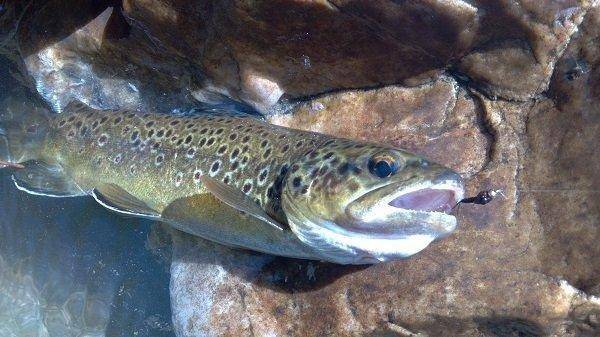Division of Wildlife Resources Press Release
If the Green River’s performance last year is any indicator, fishing this fall will be fantastic. Many anglers who fished the Green a month or two ago have stored their rods for the season. It’s not uncommon to have a favorite fishing hole all to yourself this time of the year.
“Fall fishing on the Green River was phenomenal last year,” says Ryan Mosley, a fisheries project leader for the Utah Division of Wildlife Resources. “It was common for anglers to catch browns and rainbows up to 20 inches. I have no way of predicting just how it will be this year, but I hope it’s just as good.”
At this time last year, summertime crowds were also long gone, which left mostly anglers on the river. It is consistently Mosley’s favorite season to fish the river. He says last fall’s success was due largely to spawning activities.
“Brown trout spawn in the fall on the Green,” he explained, “and we also had a strain of rainbows spawning from late October through December. Anglers were catching both species. Anglerscould see browns and rainbows spawning side-by-side on redds they constructed throughout the river.” (Redds are areas where trout clean the gravel before depositing their eggs, which will incubate for several weeks before hatching.)
While Mosley encourages anglers to get out, enjoy the seasonably mild temperatures and take advantage of fall river or stream fishing, he also cautions anglers to be careful when fishing near redds.
“Wading, anchoring boats and fishing in and above redds can negatively impact the success of the spawn and reduce the number of young trout that hatch,” he advised.
“The impact of stepping on the eggs in a redd is obvious,” Mosley says. Other possible impacts include stirring up the sediments in and above the redds. This can smother the eggs or make them more susceptible to fungus and disease well after the spawn is complete and adult fish stop tending to the eggs.
Stay updated on the best fishing this fall by checking the fishing reports at wildlife.utah.gov/hotspots. Updates and information are also available at utahwildlife.net and bigfishtackle.com.

